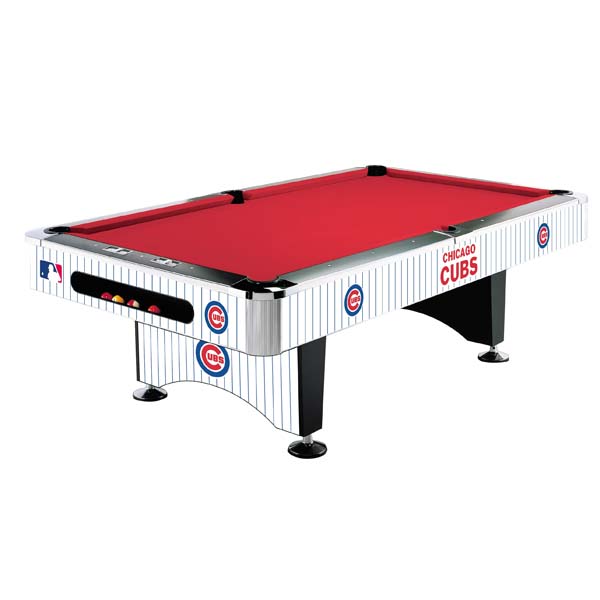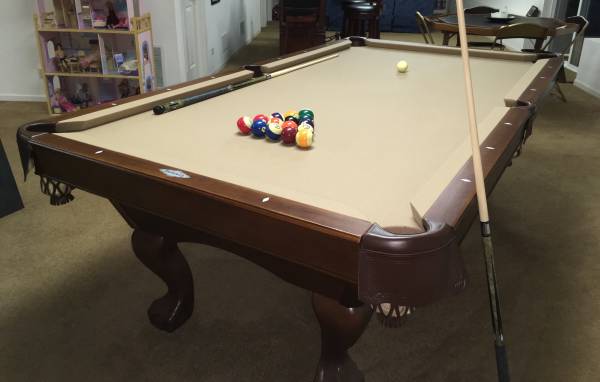
When we found ourselves taking a looong time to play one game, we asked if we could get a credit to come back. The place was very clean and well-kept, including the locker rooms and restrooms.
Billiards chicago pro#
There is a pro shop, a food counter and party rooms. The scoring is all electronic with overhead screens and you can program bumpers for the kids. We decided on two games, though we were not sure how long the kids (or us) would last. The staff could not have been more helpful or friendlier, whether it was getting shoes and balls for a 2 1/2 year old, a 4 1/2 year old and a 65 1/2 year old grandma, or retrieving those completely stopped balls in the middle of the lane from the little one. There were only a few alleys going, so we never felt rushed or crowded. Though they open early, we arrived a little after noon. We had planned on coming to Habetler when we looked at the weather and thought that it was going to be a cruddy day. There is plenty of parking and access is pretty good. It is just east of the Kennedy Expressway (I-90). For all of us, Billiards Digest keeps us all connected and is an important part of the sport.Habetler Bowl is located on the northwest corner of Foster Ave. “So they are buying pool tables as they invest more in toys for the home. “People have been staying home and not traveling, and looking for recreation in the process,” Corvey says. Her sales were up 16% in 2020 and another 15% last year. But Debbie Corvey, vice chairman of the Colorado-based Billiard Congress of America and owner of national retailer Boynton Billiards in Palm Beach, Fla., believes the pandemic has been good for the industry. Today, many of the biggest pool tournaments are held in Europe, and Saturday afternoon bowling events have lost their ESPN sponsorship. “Suddenly nobody was building houses or buying tables, and advertising fell way off.” Bowling also fell out of favor, though Panozzo points out that both billiards and bowling, which date back to the 19th century, have “always gone through up and down cycles.” “The sale of billiards tables to homeowners depends on new residential construction,” Panozzo says. They introduced more publications and an annual directory of equipment and ran regular articles on the leading bowlers and pool players on the pro tours of that era.īusiness was pretty good-Billiards Digest had a circulation of 18,000 at one point-until the Great Recession of 2008, when the market for new houses cratered. When the Luby family was ready to sell out in 1994, Panozzo and Hamilton bought the business for $800,000, outbidding Rance Crain, then-publisher of Crain’s Chicago Business.

Billiards chicago movie#
The 1986 Paul Newman-Tom Cruise movie “The Color of Money,” which focused on gambling in the pool halls around Chicago, sent the sport on a growth spurt. But like a lot of small-business guys, I decided I like being a bigger fish in a smaller pond.” “Many of my Notre Dame buddies went on to Wall Street. But it turned out that I grew to love what we do here,” says Hamilton, a Shabbona Park native. “I had a two-year commitment here after school and planned to move on. Panozzo started at Luby as a 22-year-old journalism major out of Marquette University, while Hamilton got the former owner, Mort Luby Jr., to pay for his MBA at Notre Dame in the mid-1980s in return for a promise to come to work for the firm. Many of these niche publications are owned and staffed by people who are thoroughly imbedded in their industries. “The industry has shrunk, and we’ve shrunk with it, but we’re still the place to go for companies making pool tables and cues and other equipment looking to advertise.” “There are still plenty of fanatical pool players around, and they depend on our magazine,” Panozzo says. Why do little publications like Billiards Digest hang on? The audience may be small, but it’s steadfast. In fact, circulation is up 5%, and as the pandemic wanes and the economy improves, the two hold out hope that recreation-minded Americans will once again take pool cues in hand. The co-owners now do it all by themselves-Panozzo, 64, is the writer and editor, and Hamilton, 59, runs the business side-and say the little magazine, which grossed close to $600,000 last year, is profitable. Total circulation: 3,000 monthly.īoth bowling and pool have been declining in popularity since the 1990s, when Luby had a staff of 18. Bowlers Journal is now departed, sold off to the United States Bowling Congress near Dallas some three years ago.īut the current owners, Mike Panozzo and Keith Hamilton, soldier on today in the smallest of niches-they publish Billiards Digest and a couple of spinoffs aimed at poolroom owners. The company was founded before World War I, in 1913, as the publisher of Bowlers Journal by shoe salesman Dave Luby, who had an abiding love for the sport of bowling. One is Luby Publishing in the Printer’s Row neighborhood.


A few niche publishers remain, against all odds.


 0 kommentar(er)
0 kommentar(er)
